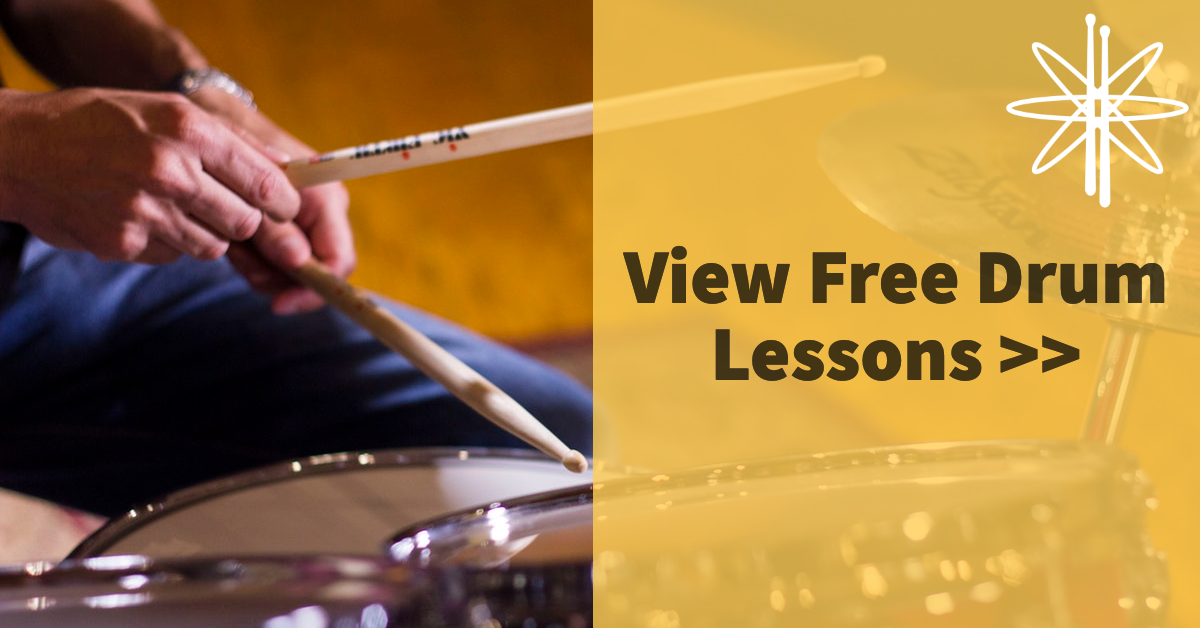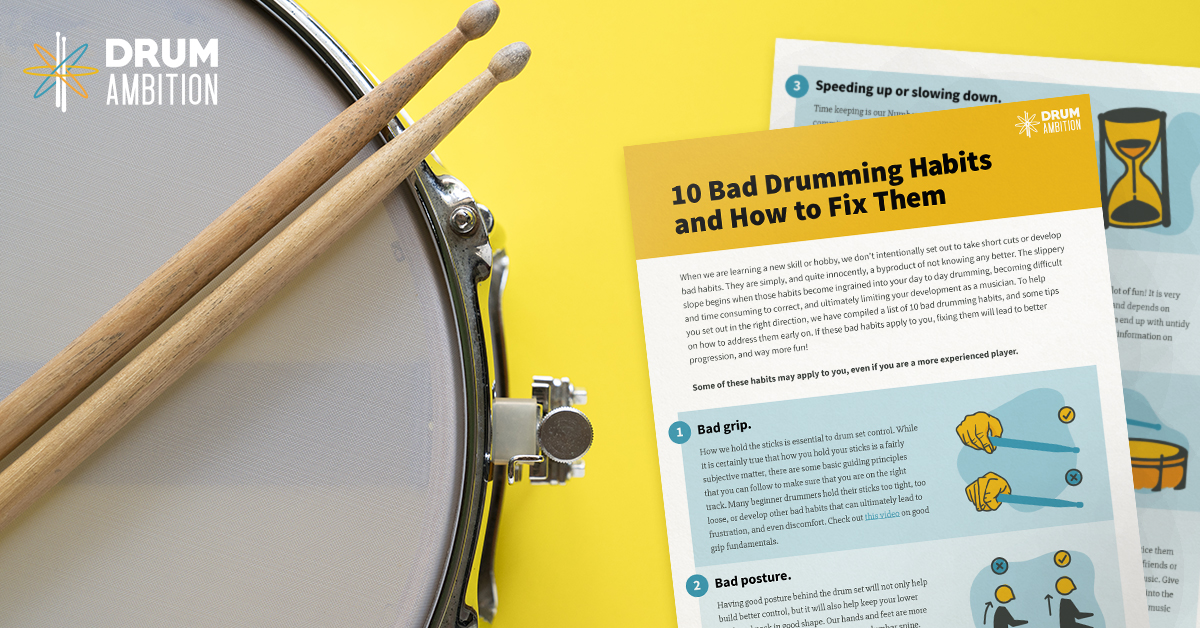Prior to becoming an online and studio drum teacher, I had a solid background in music retail. In the mid-1990's I started working in a drum shop in the UK. I began as a part-time sales advisor and in-house teacher, and worked myself up to the position of General Manager. Working in the drum retail business was a real education, and I was surprised about how much I didn't know about drums, cymbals and percussion equipment. Here are 10 facts that I didn't know about drums and drumming when I first started working in drum sales.
Drum shells are made from different woods, and each wood has different characteristics.
While many basic starter drum sets are made from basswood and general application woods, intermediate and professional level drums are normally constructed from plies of choice wood including maple, birch, oak, and mahogany. Maple is best described as warm and resonant*, while birch has a slightly more aggressive "attack" with less resonance. Mahogany and Oak normally produce higher volume drums. The plies (layers of wood) make a difference too - thinner plies make the drum more resonant, which essentially means that it rings more after being struck.
Helpful related articles:
Drum Clinics, Masterclasses and Drum Camps explained.
The drum heads really do make a difference.
Firstly, we don't really call these "drum skins" anymore - we've come a long way since the days of calf skin drum heads. Drum heads typically come in clear and coated options, and for the most part, are normally one or two plies (layers of plastic, in this case). Coated heads produce a more controlled "dry" sound, and two-ply heads provide more depth and body. Most snare drums leave their factory of origin with a single ply coated drum head - which is still considered to be the "industry standard" snare drum head. A decent set of drum heads can make economy starter drum sets sound great!
* Note on above 2 points.
It can be confusing to hear sound described as "dry", "warm" or as having "depth" and "attack". Going to a drum store, chatting with a specialist and hearing the differences for yourself can really help. The same thing applies to cymbal tone where we frequently hear terms like "dark" (low in pitch/tone), and "bright" (high in pitch/tone).
Drum sets come in different sizes.
Most drums come in either Rock, Fusion or Hybrid sized sets. Rock sets have a 22 inch diameter bass drum, toms that are 12, 13, and 16 inches in diameter and a 14 inch snare drum. Fusion drum sets have a 20 or 22 inch bass drum, 10, 12, 14 inch toms, and a 14 inch snare drum. Hybrid drum sets usually have a 22 inch bass drum, and 10, 12 and 16 inch toms, with a 14 inch snare drum. Jazz sized packages usually have an 18 inch bass drum, 12 and 16 inch toms, and a 13 or 14 inch snare drum. For higher end drums, you can select off the shelf packages at musical instrument retailers, or custom order your own sizes if you are happy to wait for them to be manufactured - usually a 3-6 month wait. Check out our guide on drum set selection if you need help here.
Snare drums have different shells too.
Aside from all of the wood options listed above, snare drums also come in a variety of metal shells. The most common are Steel, Brass, Aluminum (or Aluminium for our UK readers), Copper, and Bronze. Metal shell snare drums usually provide more volume then their wood counterparts, but to truly hear the differences, you need to visit your local drum specialist and try a few for yourself. Shopping online does not give you the same experience, as sound samples rarely give an accurate representation of a raw acoustic drum sound in the flesh.
There are three main types of drum finish.
Drums are usually finished in one of three options: plastic laminate wrap, lacquered paint or matte/oil paint. Some higher end drums are made from exotic woods such as bubinga and burl maple. These drums normally show the natural grain of the wood underneath an external clear lacquer. Plastic wraps are normally at the starting point of the price spectrum, while oils, lacquers and exotic finishes are normally a premium. While most drum manufacturers will attest that the sound of a drum can vary depending on the finish, it is, in my opinion, marginal at best.
Cymbals are either cast or sheet metal - there is a big difference.
Have you ever wondered why there is such a difference in price between different models of cymbals? The simple answer is that it depends on whether they are cast or sheet cymbals. Cast cymbals are individually made, heat molded cymbals - each formed in their own cast. The metal formula used in these cymbals is usually a guarded secret - often a mix of bronze alloys among other metals. Cast cymbals are then usually machine lathed, machine hammered or even hand hammered for individuality. Sheet cymbals are made from sheet metal and are commonly found in budget starter packs - these are great options for beginner drummers. Cast cymbals have a far superior sound, but also carry a heavier price tag.
The drum stick classification system is a little confusing at first.
We wrote a blog on understanding drum stick selection. It's not rocket science, but it can be a little confusing at first. The most common wood for drum sticks is hickory, and the average weight (which I always recommend as a starting point for beginner drummers) is the 5A. Rock players often prefer a slightly heavier weight (5B or 2B), while jazz and lighter players tend to select a lighter weight stick; the 7A model. Drum stick tips are made from wood or plastic - the latter giving a brighter cymbal response when played with the tip of the stick.
The factory setting is usually the best for the bass drum pedal.
Over the years, I have seen just about every make and model of bass drum pedal on the market. The drive system of a bass drum pedal is normally a chain (single or double chain), strap or direct-drive (two metal links instead of a chain or strap). Some bass drum pedals have plastic beaters, some have felt. Again, these just give you a different sound. No matter what type of bass drum pedal you have, I have found that they are usually best set up from the factory - there should be little need to adjust spring tension, or any other aspect of the set up - especially for beginner drummers.
Drum tuning is an art - but there is help available!
There have been DVDs made on this subject - the best one, in my opinion, being "Drum Tuning" by Bob Gatzen. Many drummers have torn their hair out over "fundamental pitch" while wrestling with overtones and undertones. There's no way around it - learning to tune drums just takes time, and a lot of patience. The good news is that there are some great products that can help you get there quicker, including my personal favorite, the DrumDial. If you can't make it to your friendly local drum retailer, you can buy one here. As an affiliate of Amazon.com, we may receive a commission if you choose to do this.
Specialist drum stores are a rare breed.
If you are lucky enough to have access to a specialist drum store that can help you with everything from sales to after sales care and maintenance, drum community events, or just somewhere to stop by and chat with some cool people that love drums as much as you do - then I actively encourage you to take full advantage of this. Specialist drum stores have never worked in such a competitive and challenging environment, and the term "use them or lose them" has never been so true.
If you have any questions relating to this article, please feel free to email [email protected].
Simon DasGupta.


